The Connecticut Eastern Railroad Museum
2019 Night Photo Shoot
The look on the face of the Cumberland Farms cashier was priceless, in the split second before she burst into laughter. My strong Appalachian drawl, in asking her how she was doing, had caught her off guard, yet she found it hilarious. “Thank you, I needed that,” she said, still laughing, ringing up two bottles of water and a Gatorade. Her work shift must have been a rough one. I found myself in this Willimantic, Connecticut convenience store on the sultry evening of a late September day, in town for the Connecticut Eastern Railroad Museum Night Photography Session.
The Connecticut Eastern Railroad Museum Night Shoot, a fundraiser for the organization, is an annual event, and I would be partaking in the 16th such happening. Since its inception, the Night Photo Shoot at CERM has been organized and directed by well-known New England photographer Tom Nanos, and this would be no exception. The event serves as a fundraiser for the museum. After years of promising (or threatening, depending on your perspective) that I would attend, the stars finally aligned, and I made the long trip to the Nutmeg State from my Appalachian home.
My trip to the CERM Night Photo Session would be a quick and ambitious one (taking place entirely over the course of a 3-day weekend). This was what my mother would’ve called a “flying trip.” Barry Manilow’s syrupy sentimental “Weekend in New England,” this was not to be.
My adventure began with a drive to the Richmond, Virginia area, where I would overnight before a long ride north on Amtrak the following day. I arrived on the old Richmond, Fredericksburg & Potomac mainline (an old haunt of mine) at rural Rixey, Virginia, in Caroline County, around 3 pm. Rixey was hot and dusty and country quiet, with more than a hint of fall in the air and on the trees. I was immediately presented with a rolling headlight meet between Amtrak’s northbound Carolinian and a southbound CSX ballast train. After a few more shots around Ashland, Virginia, I headed for dinner at a Vietnamese restaurant and then my hotel.
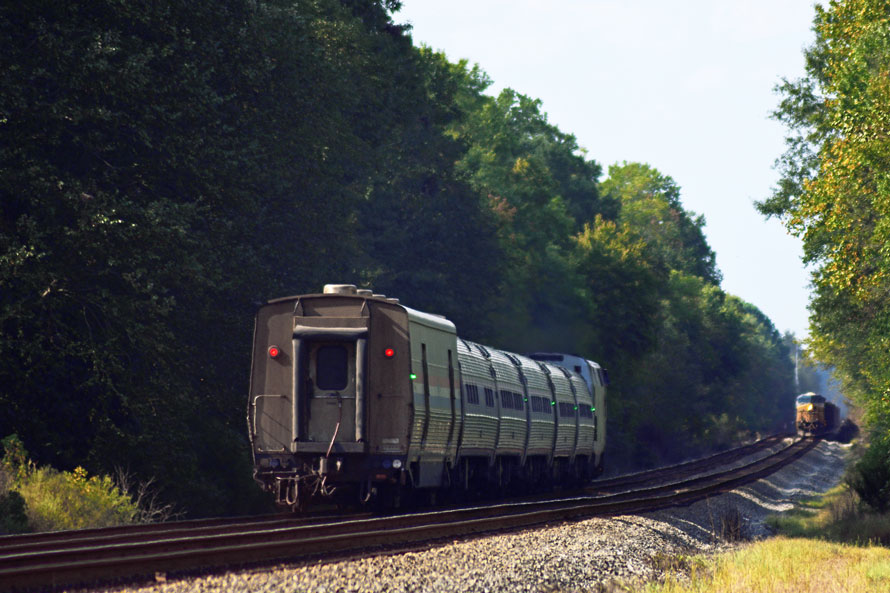
Amtrak’s northbound Carolinian has a rolling meet with a southbound ballast train at rural Rixey, Virginia on the Richmond, Fredericksburg & Potomac.
Saturday morning dawned early for me. My train, Northeast Regional 164, departed the Virginia capital at 6:35 am. I was “up and at ‘em” by 4 am, swinging by the nearest Sheetz for breakfast and to pick up snacks and drinks for the long train ride ahead. Directly, I was at Richmond’s Staples Mill Road station, a busy, utilitarian 1975-built structure along the RF&P main line outside the capitol city itself. In the muggy morning air of the outdoor waiting area, I found my train, 164, and Northeast Regional 82, lined up and ready to head north.
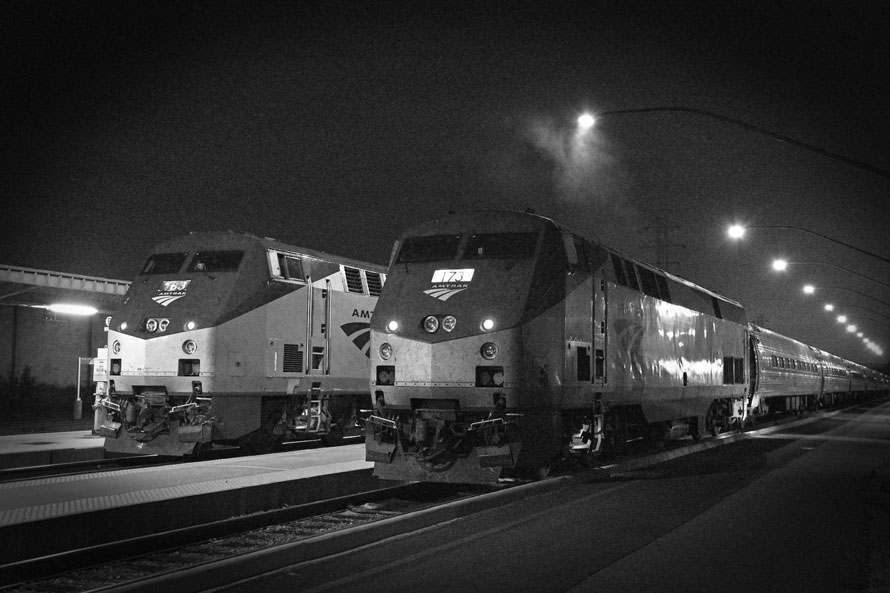
Aboard the train, I settled in, and inflated the pillow from my Amtrak “Passenger Comfort Kit” in anticipation of a nap that I knew I wouldn’t take. The conductor moved through the coach, checking tickets with his handheld terminal. Clicking on mine, he said softly, so as not to disturb the morning quiet in the car, “Change at New Haven,” in the grand old tradition. Moments later, 164 was in motion, gently gliding north through Greendale Interlocking on an “Approach Limited” signal, and then out onto the mainline of the RF&P.
The train ride was business as usual, nothing out of the ordinary, the engine swap from P42DC to ACS-64 at Washington accomplished with such precision it might have seemed like sleight-of-hand, were it not for the brief moments when the Head End Power (HEP) was off. The Northeast Regional makes short work of the electrified haul up the Northeast Corridor, but as we departed New York City and rolled out onto the New Haven’s majestic Hell Gate Bridge, I was becoming concerned, and the farther north we went, the more it felt to me that we were behind schedule. The dash seemed to have turned into a slog. Would I still be able to make my connection in New Haven?
I needn’t have worried. As it turned out, 164 ended up being only 5 minutes late into New Haven, and the Shuttle was itself a few minutes behind, so I made my connection with no problem, although there was a bit of anxiety for a while. Aboard the Shuttle, I ended up sitting “backwards” as the push-pull 2-car train, shoved by a P42DC, blasted off and ran at blistering speeds across south-central Connecticut.
After a 7-minute late arrival and a quick walk across the street from Hartford Union Station, I was installed in my hotel. I freshened up and changed, then went to the lobby to wait for Tom Nanos, who had generously agreed to give me a ride to the museum. The car ride from Hartford to Willimantic was quick, and Tom and I used the time to catch up.
At last, after hundreds of miles by road and by rail, I arrived at the Connecticut Eastern Railroad Museum, a trim, neat facility, somewhat wedged in between the Willimantic River and the tracks of the New England Central. The humidity had become heavy, and stepping out of the car was like being slapped across the face by a gigantic wet hand.
CERM revealed itself to have an eclectic, regionally appropriate collection which includes New Haven, Central Vermont, and Rutland equipment along with a smattering of industrial switchers. The centerpiece of the facility is the Columbia Junction roundhouse, a replica of the 1892 structure, rebuilt to the original plans and on the original foundation. I was quickly introduced to many of the museum’s docents and volunteers, as well as several photographers who were participating in the photo shoot. Everyone was so friendly and outgoing, it was easy to forget I was the only one there who spoke without an accent.
While Tom had been at CERM earlier and planned the shots for the night, there was still the actual business of setting them up. The execution would involve a degree of manual labor, and I’d volunteered to help with this work in a token exchange for the ride from Hartford to the museum. This included the unloading and schlepping around of industrial strength tripods that seemed to be made from iron pipe, along with light units and remote triggers and batteries and cables. At one point during the night, Tom asked if I’d carry his camera from one spot to another; I felt like I’d been entrusted with the crown jewels of some exotic kingdom. I did as he asked, but it made me nervous; I decided that were I to stumble in the darkness, I’d deliberately throw my own camera to the ground in a sacrifice to save Tom’s, although I wasn’t at all sure how I’d accomplish that if it actually became necessary.
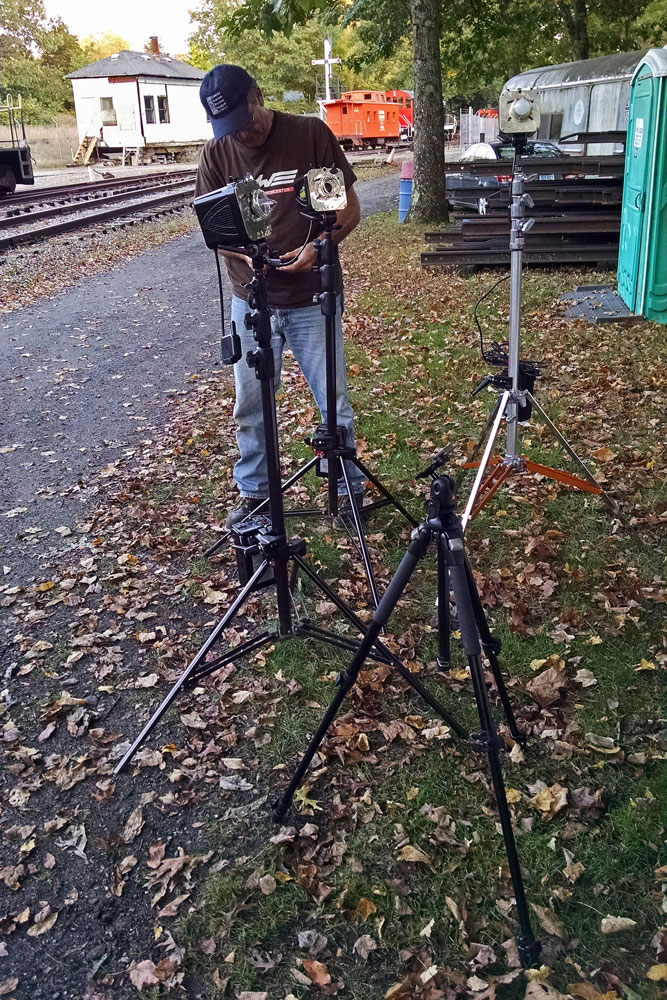
In those carefree days before COVID-19, the threat of the mosquito borne “EEE” (Eastern equine encephalitis) was in the air, literally and figuratively, and the cologne of the night was a cloying combination of DEET, permethrin, and, given the heat, sweat. Heady stuff. I was particularly concerned about EEE, and my application of permethrin was akin to slathering myself with lard, like some Southern-fried dish, of which I suppose I was.
As twilight closed in, the anticipation grew, and finally, the shoot began. Some in attendance made up a rowdy devil’s brigade, boisterous and exuberant, while others were quiet and reserved, almost solemn. There was an interesting mix of railfans and non-railfans, the serious and the curious. Yet all were clearly enjoying themselves, and the evening seemed to become electric and dramatic, something special and memorable unfolding right before our very eyes.
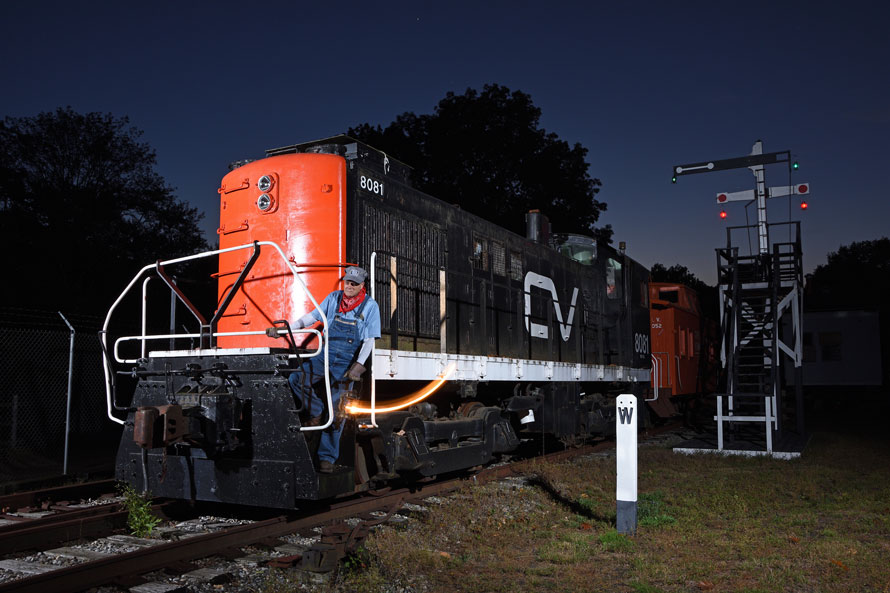
The first shot of the night was Central Vermont S-4 8081 posed with CERM’s replica gallows signal.
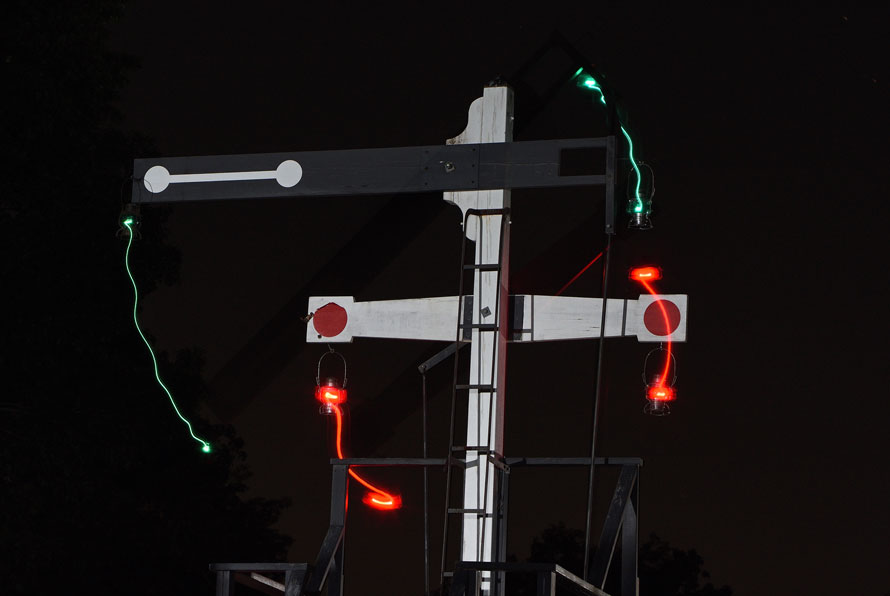
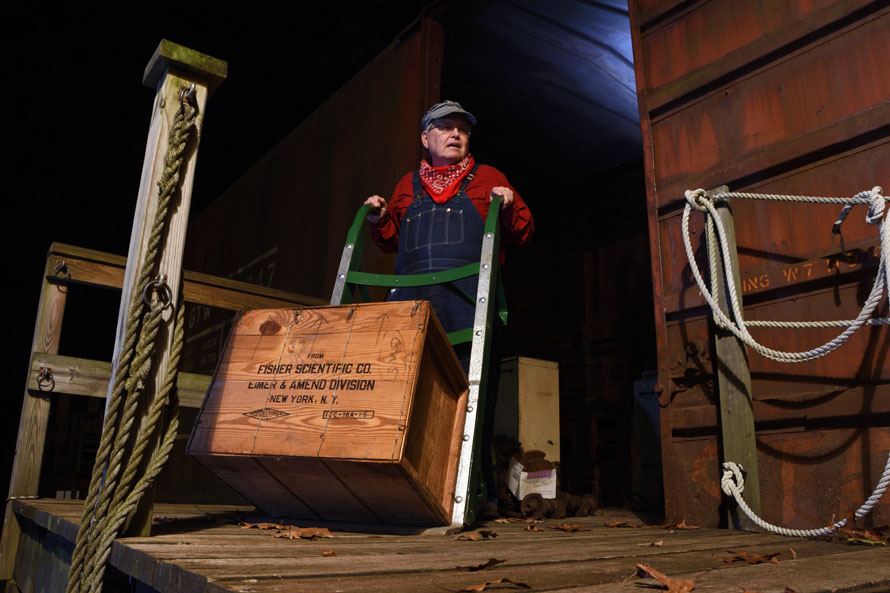
CERM docent Jeff Laverty unloads a Grand Trunk Western boxcar.
Tom kept the shoot moving, personable yet professional, amply demonstrating his night photography skills, for which he is known. The CERM docents and volunteers were patient and understanding, some willing to freeze into position for uncomfortable periods of time so as not to blur long time exposures. Photographer Mark Spremulli had brought an incredibly powerful flashlight, shining it on the subject matter at hand and making it easier for the rest of us to focus our cameras.
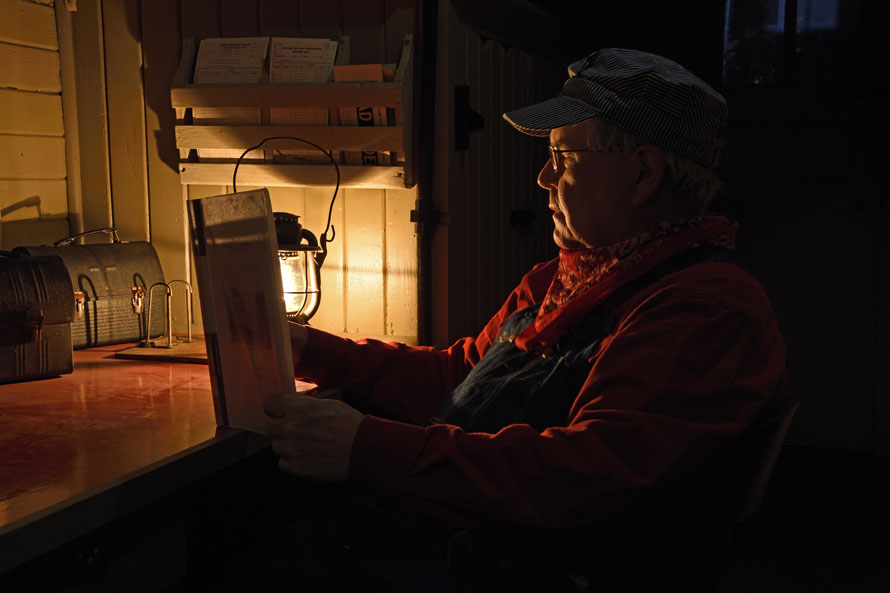
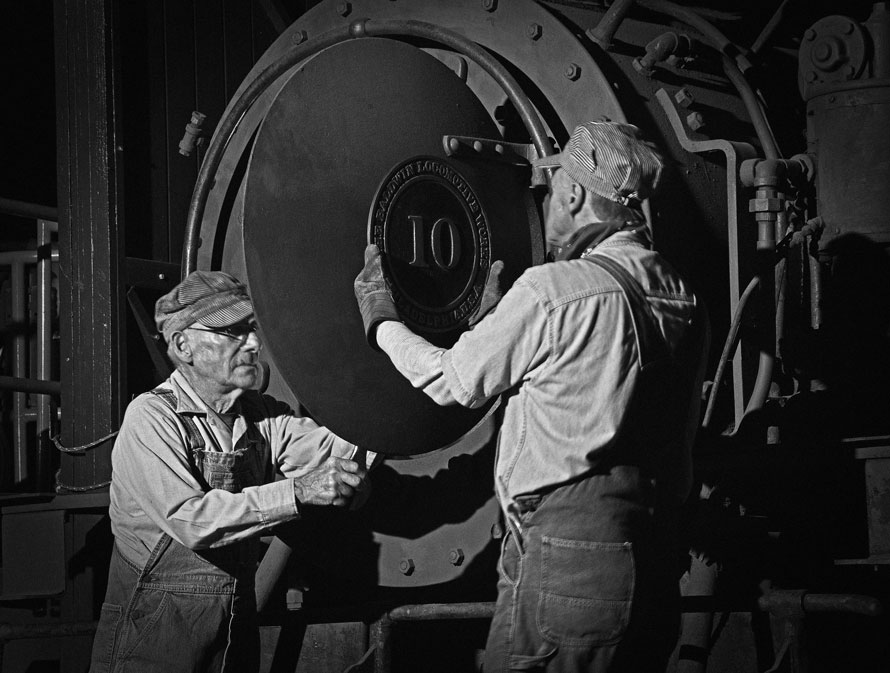
Bob Hassett (left) and another CERM volunteer seem locked in time as they simulate work on Baldwin 0-4-0 #10.
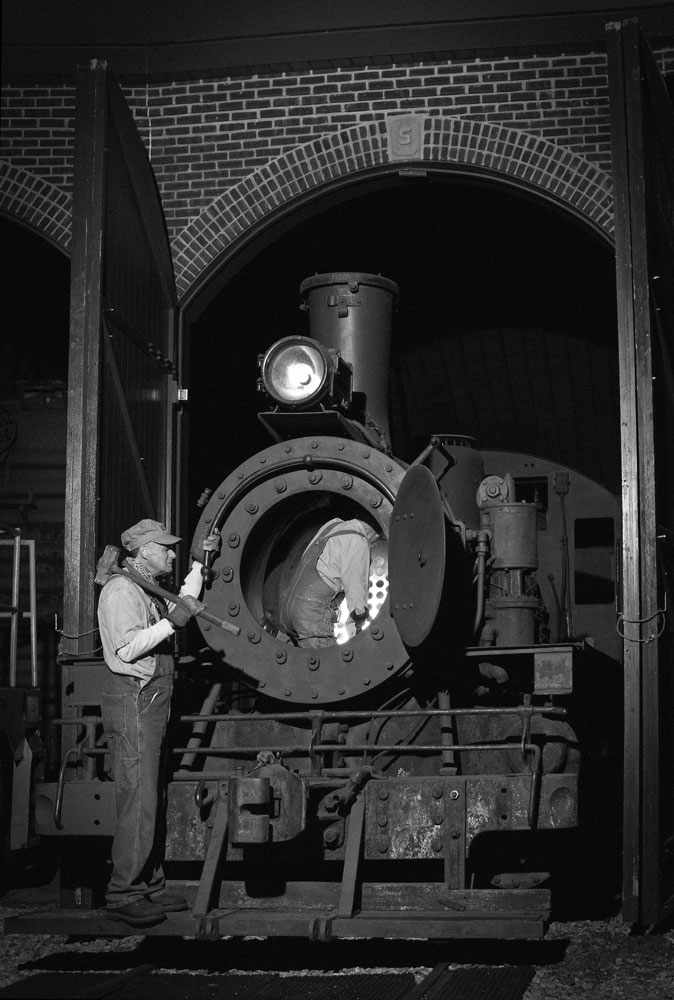
CERM volunteers replicate work inside #10’s smokebox.
At one point, I eschewed the “official” goings-on at the roundhouse and stumbled around in the pitch to get a shot of New Haven FL9 2023 (originally NYNH&H 2057) using only ambient light from a nearby business.
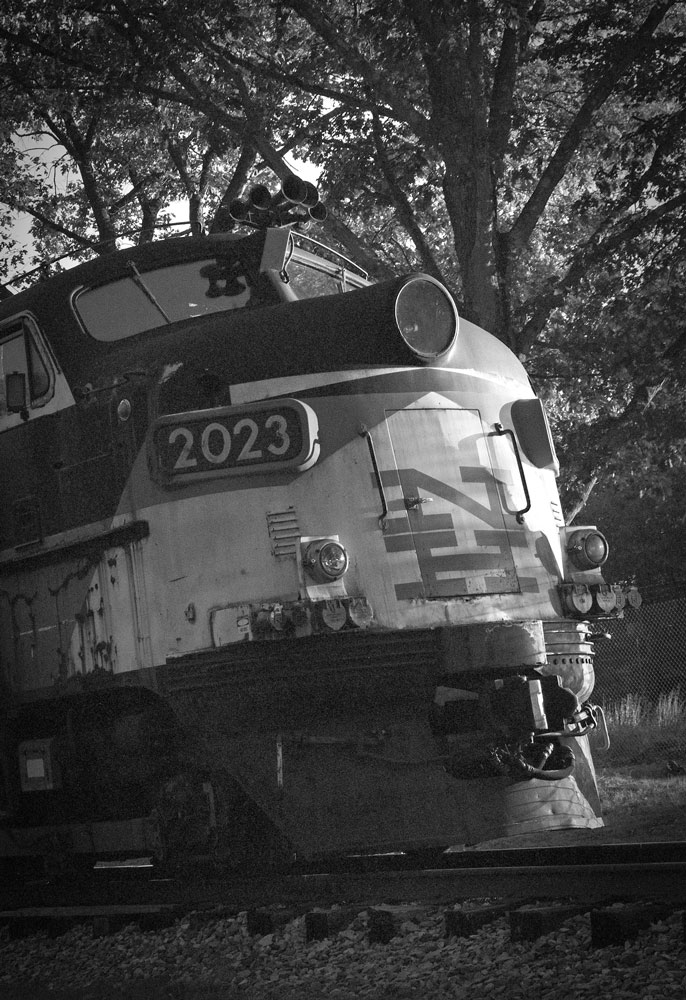
An unofficial grab shot of New Haven/CDOT FL9 2023.
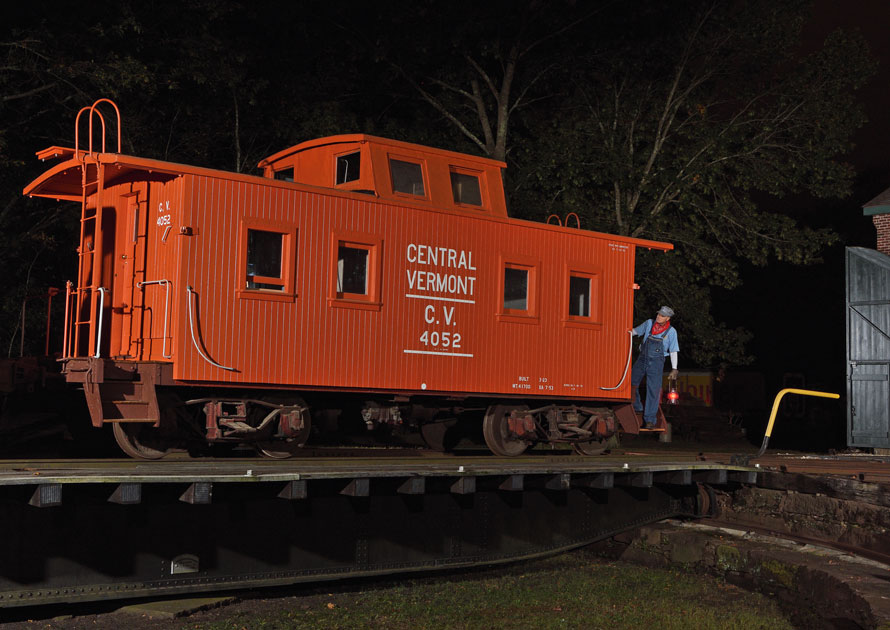
Central Vermont caboose 4052 is posed on the turntable outside the Columbia Junction roundhouse.
The “grand finale” for the night was provided by CERM volunteer Rich Cizik, Jr., who wielded a blowtorch against scrap steel on the frame of an old flatcar, the resulting shower of sparks and slag like celebratory fireworks.
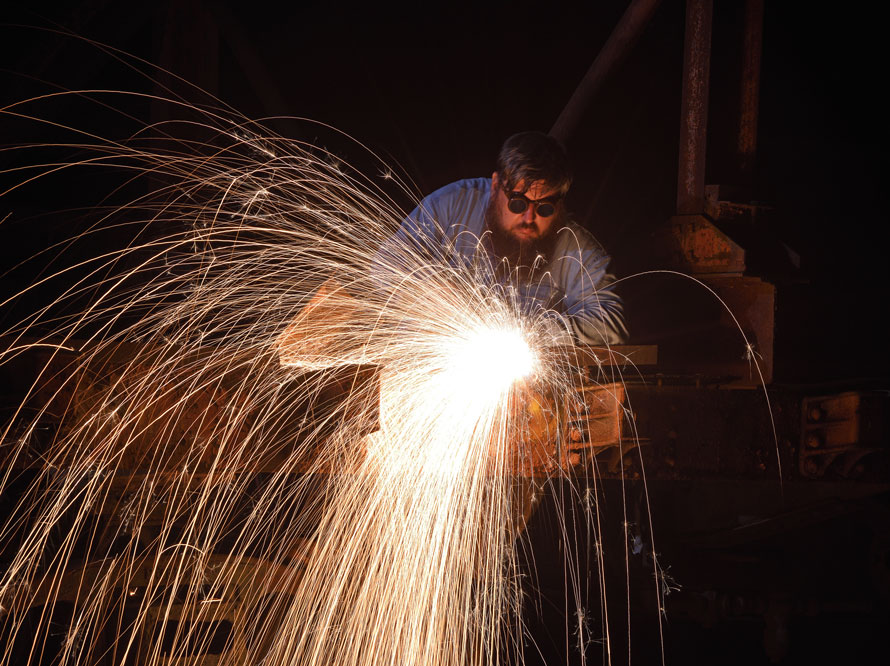
CERM’s Rich Cizik, Jr. does a bit of blowtorch work to close out the night photo session.ratory fireworks.
With the spectacular spark show done, the 16th annual Connecticut Eastern Railroad Museum Night Photo Shoot was at an end. Just over three hours had passed, but it sure didn’t seem like it; the time had gone by way too quickly. As the gathered began to slowly disperse, I said goodbye to many new friends, and then set about helping Tom with the break down and loading of his equipment. Tom, photographer Fred Guenther and I then retired to the nearby Willimantic Brewing Company for a late dinner.
The next morning, I was back at Hartford Union Station, sitting on a bench on the nearly deserted platform, eating a Dunkin Donuts breakfast while waiting for the Shuttle back to New Haven. From New Haven, it was Northeast Regional 195 back to Richmond. I thought 195 was crowded until our stop at New York Penn Station, when the boarding call was followed by a cascading wall of humanity down the escalators, not unlike the iconic elevator scenes in Stanley Kubrick’s 1980 horror film The Shining. After Washington, though, the crowd thinned considerably, and the final lap to Richmond was relaxing and carefree, in perfect keeping with the rural quality of much of the RF&P.
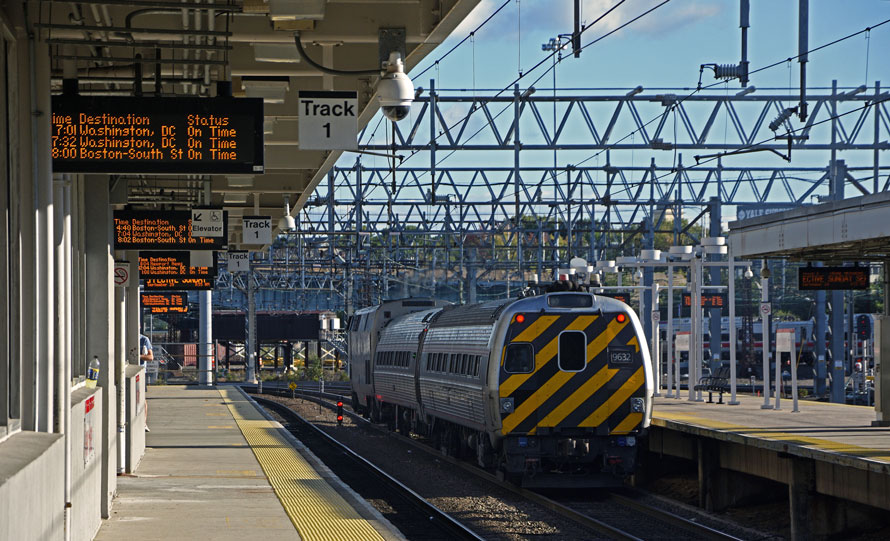
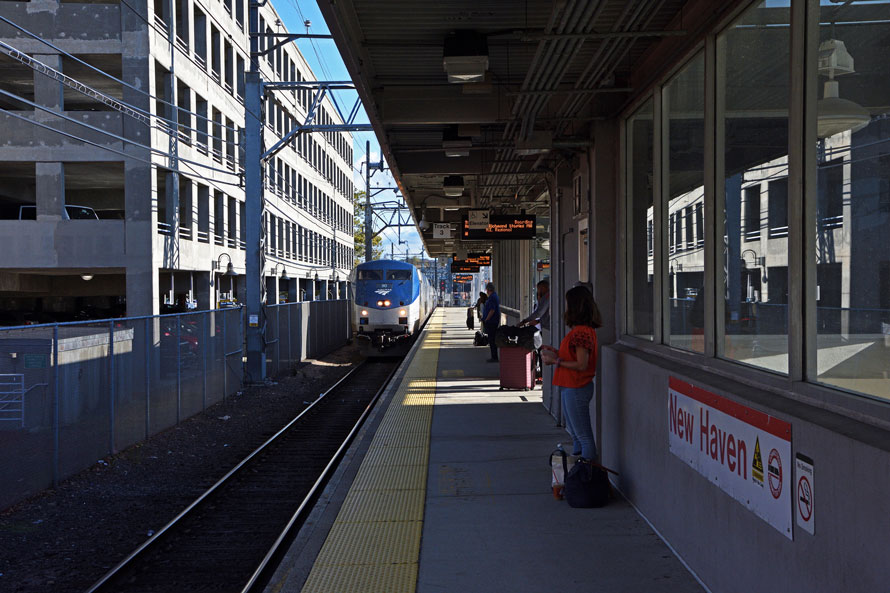
The author’s train, 195, arrives at New Haven. The two P42DC diesels, which have led the way from Boston, will be removed here, replaced by an ACS-64 electric locomotive for the run to Washington, DC.
Detraining at Richmond, I realized that 91, the southbound Silver Star, was due right behind us, so I lingered on the station patio and made a few shots of the Florida-bound streamliner. With that, I decided I’d had quite enough trains for one weekend, and I collected my car and made the long drive home. Driving west into the descending twilight of a Virginia evening, jamming out to the Ting Tings’ “Shut Up and Let Me Go,” or Molly Hatchet’s “Flirtin’ With Disaster,” I was filled with the unmistakable feeling that an epic experience was coming to an end.
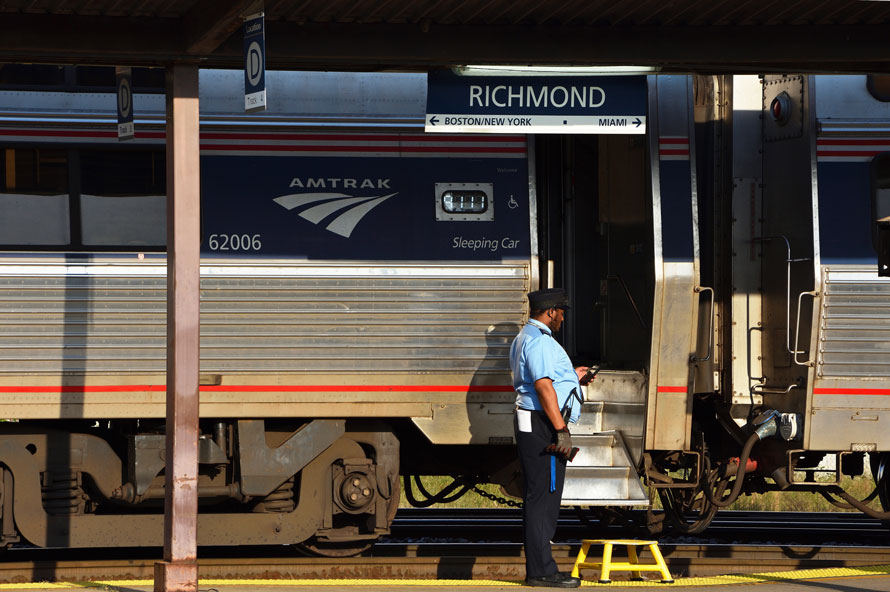
Silver Star, checks his manifest at Richmond, Virginia, September 29, 2019.
My trip to the CERM Night Shoot was certainly an adventure, one that will not soon be forgotten. It was well worth it, and I’d do it again in a heartbeat. I heartily recommend the event to anyone interested in night photography, whether interested in trains or not.
The 2021 Connecticut Eastern Railroad Museum Night Photo Shoot will be held October 2, 2021, beginning at 6:30 pm. Reservations are required, and attendance is limited and typically sells out quickly. For more information or to lock in your attendance, email Tom Nanos at tom@nanosphoto.com.
Find out more about the Connecticut Eastern Railroad Museum by visiting http://www.cteastrrmuseum.org/“
Eric Miller – Photographs and text Copyright 2021